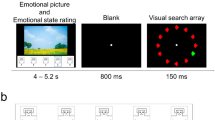Abstract
Sensor selection is typically used in magnetoencephalography (MEG) and scalp electroencephalography (EEG) studies, but this practice cannot differentiate between changes in the distribution of neural sources versus changes in the magnitude of neural sources. This problem is further complicated by (1) subject averaging despite sizable individual anatomical differences and (2) experimental designs that produce overlapping waveforms due to short latencies between stimuli. Using data from the entire spatial array of sensors, we present simple multivariate measures that (1) normalize against individual differences by comparison with each individual’s standard response; (2) compare the similarity of spatial patterns in different conditions (angle test) to ascertain whether the distribution of neural sources is different; and (3) compare the response magnitude between conditions which are sufficiently similar (projection test). These claims are supported by applying the reported techniques to a short-term word priming paradigm as measured with MEG, revealing more reliable results as compared to traditional sensor selection methodology. Although precise cortical localization remains intractable, these techniques are easy to calculate, relatively assumption free, and yield the important psychological measures of similarity and response magnitude.
Similar content being viewed by others
References
Baillet S, Garnero L. A Bayesian approach to introducing anatomo-functional priors in the EEG/MEG inverse problem. Biomed Eng IEEE Trans 1997;44:374–85.
Basile LFH, Brunetti EP, Pereira Jr JF, Ballester G, Amaro Jr E, Anghinah R, Ribeiro P, Piedade R, Gattaz WF. Complex slow potential generators in a simplified attention paradigm. Int J Psychophysiol 2006;61:149–57.
Baudena P, Halgren E, Heit G, Clarke JM. Intracerebral potentials to rare target and distractor auditory and visual stimuli. III. Frontal cortex. Electroencephalogr Clin Neurophysiol 1995;94:251–64.
Campanella S, Gomez C, Rossion B, Liard L, Debatisse D, Dubois S, Delinte A, Bruyer R, Crommelinck M, Guerit JM. A comparison between group-average and individual evoked potential analysis. Neurophysiol Clin 1999;29:325–38.
Corouge I, Hellier P, Gibaud B, Barillot C. Interindividual functional mapping: a nonlinear local approach. Neuroimage 2003;19:1337–48.
Dehaene S, Naccache L. Imaging unconscious semantic priming. Nature 1998;395:597.
Di Lollo V, Enns J, Rensink R. Competition for consciousness among visual events: the psychophysics of reentrant visual processes. J Exp Psychol Gen 2000;131:590–3.
Fischl B, Sereno MI, Dale AM. Cortical surface-based analysis: II: inflation, flattening, and a surface-based coordinate system. Neuroimage 1999;9:195–207.
Haig AR, Gordon E. Projection onto centroids difference vectors: a new approach to determine between group topographical differences, applied to P3 amplitude in Schizophrenia. Brain Topogr 1995;8:67–73.
Halgren E, Baudena P, Clarke JM, Heit G, Liegeois C, Chauvel P, Musolino A. Intracerebral potentials to rare target and distractor auditory and visual stimuli. I. Superior temporal plane and parietal lobe. Electroencephalogr Clin Neurophysiol 1995a;94:191–220.
Halgren E, Baudena P, Clarke JM, Heit G, Marinkovic K, Devaux B, Vignal JP, Biraben A. Intracerebral potentials to rare target and distractor auditory and visual stimuli. II. Medial, lateral and posterior temporal lobe. Electroencephalogr Clin Neurophysiol 1995b;94:229–50.
Hämäläinen M, Hari R, Ilmoniemi RJ, Knuutila J, Lounasmaa OV. Magnetoencephalography–theory, instrumentation, and applications to noninvasive studies of the working human brain. Rev Mod Phys 1993;65:413.
Harris A, Nakayama K. Rapid face-selective adaptation of an early extrastriate component in MEG. Cereb Cortex 2007;17: 63–70.
Holcomb PJ, Grainger J. On the time course of visual word recognition: an event-related potential investigation using masked repetition priming. J Cogn Neurosci 2006;18: 1631–43.
Huber DE, Tian X, Curran T, O'Reilly RC, Woroch B. The dynamics of integration and separation: ERP, MEG, and neural network studies of immediate repetition effects, submitted.
Humphreys GW, Besner D, Quinlan PT. Event perception and the word repetition effect. J Exp Psychol Gen 1988;117:51–67.
Kanwisher NG. Repetition blindness: type recognition without token individuation. Cognition 1987;27:117–43.
Kanwisher N, Tong F, Nakayama K. The effect of face inversion on the human fusiform face area. Cognition 1998;68:B1–B11.
Kriegeskorte N, Goebel R, Bandettini P. Information-based functional brain mapping. Proc Nat Acad Sci 2006;103: 3863–8.
Levin DT, Simons DJ. Failure to detect changes to attended objects in motion pictures. Psychon Bull Rev 1997;4:501–6.
Liu L, Ioannides AA. A correlation study of averaged and single trial MEG signals: the average describes multiple histories each in a different set of single trials. Brain Topogr 1996;8: 385–96.
Maintz JBA, Viergever MA. A survey of medical image registration. Med Image Anal 1998;2:1–36.
Makeig S, Jung T-P, Bell AJ, Ghahremani D, Sejnowski TJ. Blind separation of auditory event-related brain responses into independent components. Proc Nat Acad Sci 1997;94: 10979–84.
Mosher JC, Leahy RM, Lewis PS. EEG, MEG: forward solutions for inverse methods. Biomed Eng IEEE Trans 1999;46:245–59.
Norman KA, Polyn SM, Detre GJ, Haxby JV. Beyond mind-reading: multi-voxel pattern analysis of fMRI data. Trends Cogn Sci 2006;10:424–30.
Nunez PL, Srinivasan R. Electric fields of the brain: the neurophysics of EEG. New York: Oxford University Press; 2006.
Posner M, Snyder C, Davidson BJ. Attention and the detection of signals. J Exp Psychol 1980;109:160–74.
Raymond J, Shapiro K, Arnell K. Temporary suppression of visual processing in an RSVP task: an attentional blink? J Exp Psychol Hum Percept Perform 1992;18:849–60.
Uhl C, Kruggel F, Opitz B, Yves von Cramon D. A new concept for EEG/MEG signal analysis: detection of interacting spatial modes. Hum Brain Mapp 1998;6:137–49.
Whittingstall K, Stroink G, Dick B. Dipole localization accuracy using grand-average EEG data sets. Clin Neurophysiol 2004;115:2108–12.
Wilding EL, Rugg MD. An event-related potential study of recognition memory with and without retrieval of source. Brain 1996;119:889–905.
Woldorff MG. Distortion of ERP averages due to overlap from temporally adjacent ERPs: analysis and correction. Psychophysiology 1993;30:98–119.
Xu Y, Liu J, Kanwisher N. The M170 is selective for faces, not for expertise. Neuropsychologia 2005;43:588–97.
Acknowledgment
We thank T. Crowley, and V. Hagan for research assistance. This research was supported by NIMH grant MH063993-04.
Author information
Authors and Affiliations
Corresponding author
Rights and permissions
About this article
Cite this article
Tian, X., Huber, D.E. Measures of Spatial Similarity and Response Magnitude in MEG and Scalp EEG. Brain Topogr 20, 131–141 (2008). https://doi.org/10.1007/s10548-007-0040-3
Accepted:
Published:
Issue Date:
DOI: https://doi.org/10.1007/s10548-007-0040-3




